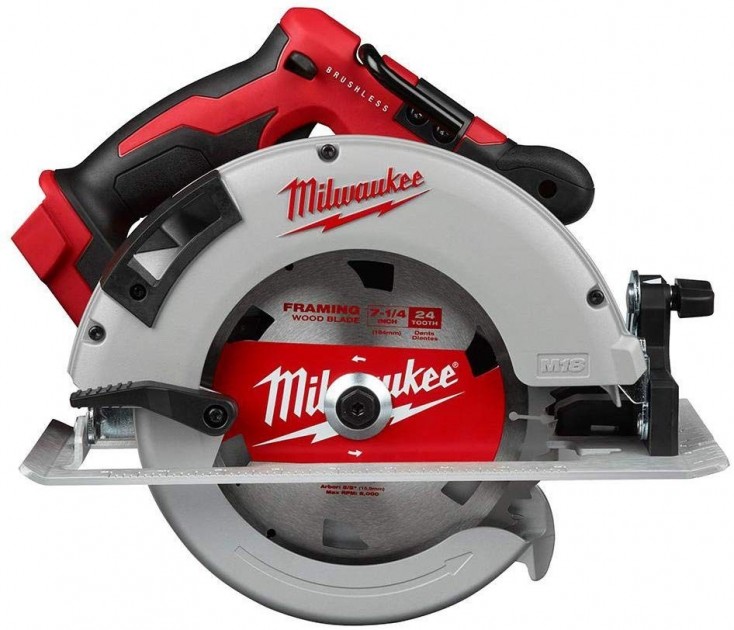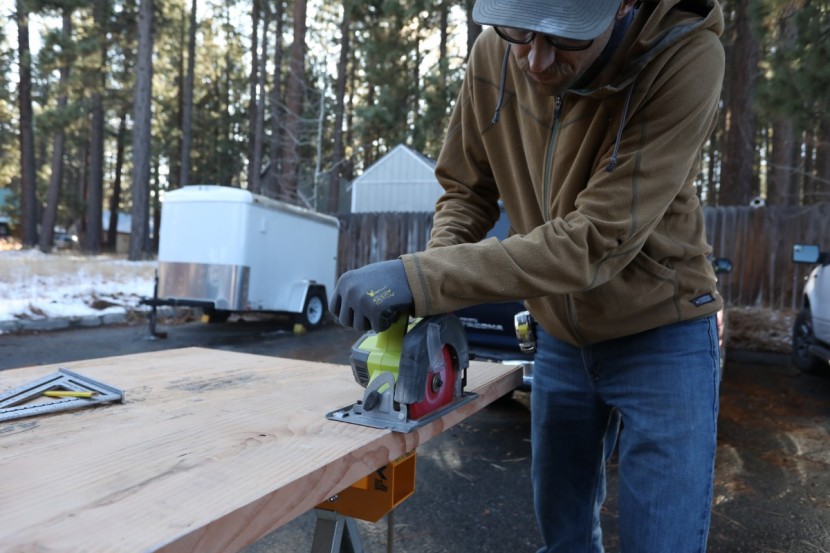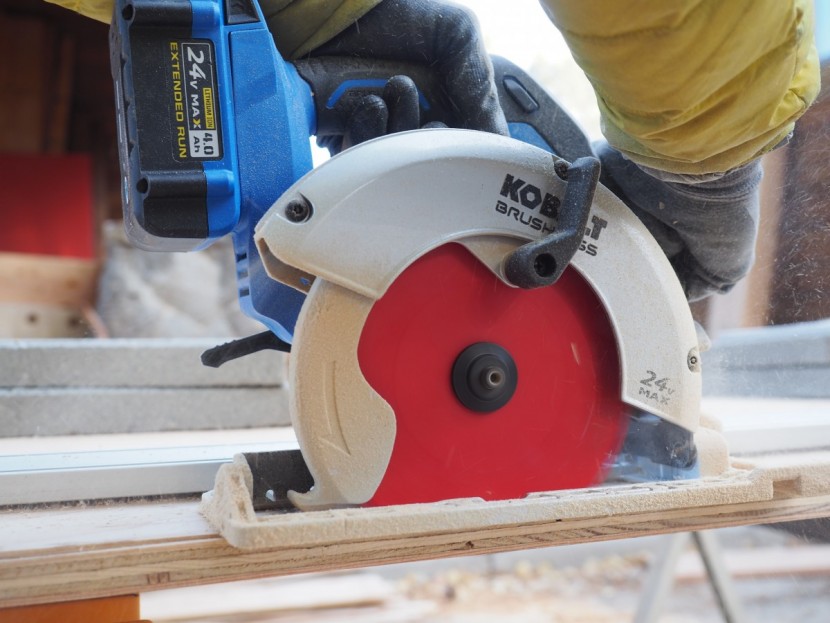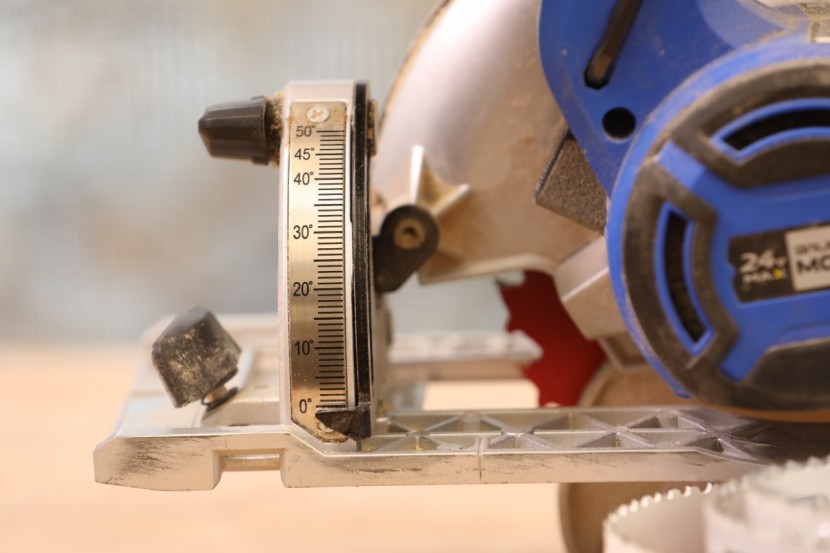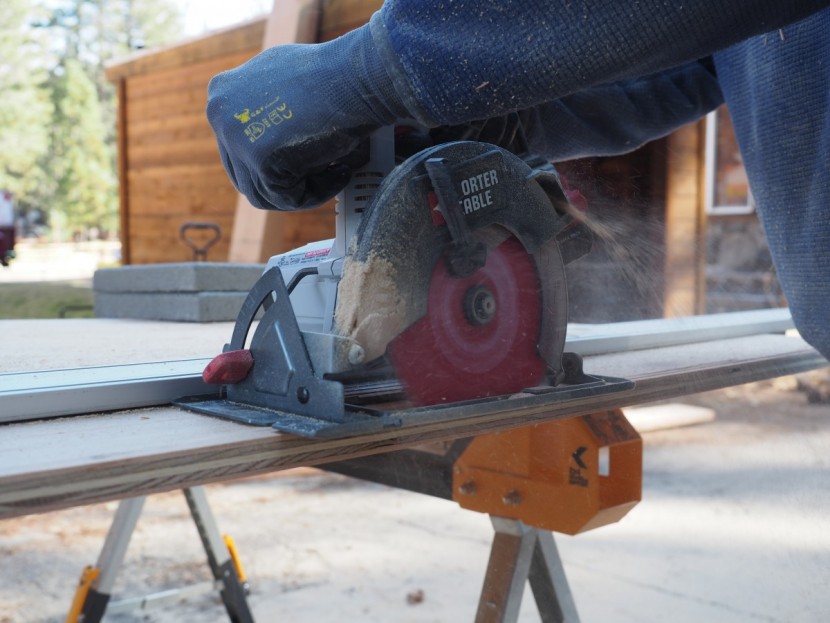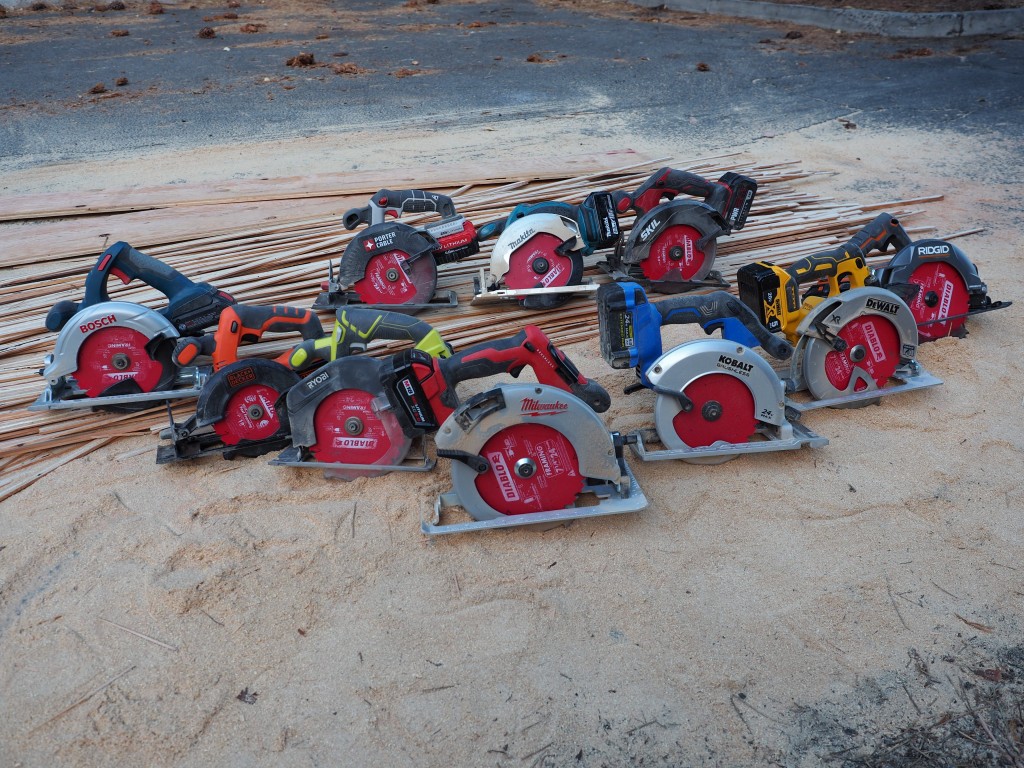Whether you're a DIY homeowner or a professional tradesman, the cordless circular saw market has products that cover a broad range of needs, uses, and price points. We know this to be the case because a finish carpenter and a handy homeowner produced this review. Together we tested the most sought after saws to see if they live up to their marketing claims and the standards of our respective user group. Our testing looks at three broad categories or metrics that assess all the functions of a circular saw. As some metrics involve a greater number of tests, we weight each based on its contribution to the overall user experience. These metrics and their weight are as follows: Cutting (50%), Ease of Use (30%), and Battery (20%).
Cutting
Cutting: it's what saws are all about. And, boy, do we make a lot of cuts during our tests. We make full-depth cross cuts in a 6x12" softwood header and 10' rips down a 2x12" softwood plank. We also make cross cuts of 2x12" laminated veneer lumber (LVL) plank that is dense and demanding compared to framing lumber. We also rip thousands of feet of 3/4" plywood during our battery tests — more on that later. For consistency and comparison, we make all of the softwood cuts using a freud Diablo framing blade, while the sightline cuts and the LVL cuts are made with a Diablo finish blade.
All of our softwood cuts are timed and repeated by both testers. Typically, one wouldn't rush through a cut, especially a cut on an expensive piece of lumber. However, what we reveal by speeding up the cut is the power of the motor and the RPMs that it can crank out. However, it isn't just speed that's of concern. We also take into account the “feel” of the saw when making such a demanding cut. We want the cut to be smooth and easy, as if the saw is eager to do the work.
Ease of Use
Ease of use is a broad category that touches on all aspects of saw usage. What we drill down on in this metric is how easy it is to get a saw to do what we want it to do. We made hundreds of cuts with these saw on a variety of wood types, so assessing them for their ease or difficulty of use was a natural part of the process. Nonetheless, we perform a dedicated shoe adjustment evaluation for cutting depth and bevel. We also assess the accuracy of the sightlines on the leading edge of the shoe. Finally, we measure the marked bevel angles and depth settings for exactness and range.
Shoe adjustment is paramount. When preparing the saw for a cut we don't want to have to fight the depth and bevel release knob or lever. The sliding action of these components should also be smooth. More importantly, once we get the saw dialed in, we don't want there to be any movement that will cost time and money. Each saw is analyzed for these characteristics and rated accordingly.
During the cut tests we also assess the accuracy of the sightline (also known as saw line) on each model. We want to know how good the cut will be if it is made solely using the sightline and so we measure each saw's divergence, if any, from the chalk line having made a cut in this fashion. Part of this evaluation is an assessment of how easy it is to see the sightline when the saw is cutting. The position of the pommel grip and the upper blade guard can obscure the view. As can sawdust and the vibration of the saw.
Battery
Our battery tests are straightforward but demanding on both the testers and, more importantly, the saws. Here's the rundown. We take a sheet of 3/4" plywood and mark out 1/4" x 96" cuts. We then set a guide in place to ensure a straight cut. We then repeatedly make rips, moving the guard down as we go, until the battery dies. While some batteries give up the ghost rather quickly, some will last long enough to try our patience and our nerves. In the end, we cut well over 2,000 linear feet of plywood to exhaust the batteries of this class of saws. The saws that made the most cuts rated the highest in this metric.
Not all of the batteries in our evaluation have the same voltage, let alone the same amp-hours. Moreover, many brands will provide several amp-hour battery options. We did our tests with the most commonly available batteries for each tool.
Conclusion
We performed hands-on testing on all of the saws in our review. This is no small feat as we spent dozens of hours crosscutting soft and hardwood lumber. We measure the accuracy of every setting on the saw from the bevel to the blade depth to the reliability of the sightline. Finally, we aggregate all of the saw specs and features for easy reference in our Cordless Circular Saw Review.

